Keywords
Catch; Harvest; Rainbow trout; Recreational angling; Stocking
Introduction
Rainbow trout Oncorhynchus mykiss are one ofthe most widely
Some aspects of angling such as angler effort, harvest, and exploitation, have been widely studied, however the timing and concentration of harvest in put-and-take rainbow trout fisheries remains poorly understood (Post and Parkinson, 2012; Keller et al., 1990). Greiner (2011) characterized angler harvest of fish in South Dakota urban fisheries and found that rainbow trout were highly targeted, with catch rates as high as seven trout per anglerhour. Butler and Borgeson (1965) noted that more than half of the stocked catchable trout are usually caught within the first 10 days after stocking. Additionally, Cox and Walters (2002) showed that high levels of exploitation can occur in wild rainbow trout fisheries with relatively low angler effort.
The popularity of put-and-take rainbow trout fisheries necessitates an understanding of the factors influencing harvest. However a paucity of information exists regarding the timing and concentration of harvest in these systems. Thus, the objective of this study was to describe the timing and concentration of catchable rainbow trout harvest in put-and-take rainbow trout fisheries. introduced fish species in North America (MacCrimmon, 1971). They are commonly stocked to create or enhance recreational angling opportunities in aquatic systems throughout the United States, often using a put-and-take management approach (Kerr and Lasenby, 2000). Stockings of catchable rainbow trout often provide a harvestable product with high catch rates, making them ideal for urban fisheries, kids fishing ponds, and other high use aquatic systems (Fay and Pardue, 1986). Due to the high angling pressure in many systems managed primarily using put-andtake rainbow trout, the timing and concentration of harvest are important factors affecting management decisions.
Materials and Methods Study site
This study was conducted at Upper Mirror Lake (2 ha) and Lower Mirror Lake (1.1 ha), which are located at the Mirror Lakes Game Production Area, rural Spearfish, South Dakota. The only access to the lakes is a single entrance road. This road also acts as a boundary for McNenny State Fish Hatchery and the associated hatchery housing, which allowed for the observation of all vehicle traffic by hatchery staff at all hours. The lakes are surrounded by land owned by the South Dakota Department of Game, Fish and Parks, which is in turn surrounded by private ranchland. Both Mirror Lakes are managed as put-and-take fisheries, and are frequently stocked with catchable-sized rainbow trout. Regulations limit anglers to a daily harvest of five fish per day, of which only one can exceed 36 cm.
Stocking and tagging
The stocking of Shasta strain rainbow trout [mean (SD) length and weight=294 (24) mm and 248 (69) g, respectively] in both lakes occurred on 22 May, 7 June, 22 June, and 12 July. Upper Mirror Lake received 200 fish at each stocking, while Lower Mirror Lake received 150 fish. Immediately prior to stocking, each trout was anesthetized with carbon dioxide and anchortagged with a discrete color-number combination. Each fish was uniquely marked to allow for the determination of the time from stocking until harvest. The fish were typically stocked within 30 min after recovery from tagging and anesthesia.
Data collection and analysis
From May 16, 2006 through August 16, 2006, an angler census was conducted for both lakes from sunrise to sunset every day of the week. All vehicles entering the area were stopped by a creel clerk and informed that there would be a mandatory interview upon departure. All vehicle entry and exit times on the single access road were recorded. Upon leaving Mirror Lakes, every vehicle was stopped, with every angler interviewed. The vehicle license plate number and angling party size were recorded. Unique tag data from each harvested trout was also recorded.
The timing of harvest was determined by comparing the day the fish was harvested to the day that it was stocked. The concentration of harvest was determined by totaling the number of harvested rainbow trout to the specific vehicle license plate associated with the harvest.
Angling activity was suspected to differ between the lakes; therefore data was collected separately by location (Upper or Lower Mirror Lake) during the angler interviews. It was assumed that there was no angling pressure at night. In a few instances, people at the lakes at night were interviewed, and in all cases they were engaged in activities other than angling. In addition, hatchery employees living in the adjacent hatchery residences did not observe any night fishing activity. If night fishing did occur, it was likely negligible and would not have affected the results of the study.
Results
Angler use
During the course of our study 1,014 unique angling parties visited the Mirror Lakes complex (Figure 1). Angling pressure averaged 24 anglers per day, with anglers logging a total of 2,203 angler days between the two lakes (Figure 2). The average size of angling parties was 2.45 and 2.30 anglers/party at Upper and Lower Mirror Lakes, respectively. Average trip length was similar between lakes with anglers spending 1.99 hours fishing at Upper Mirror Lake compared to 1.89 hours at Lower Mirror Lake.
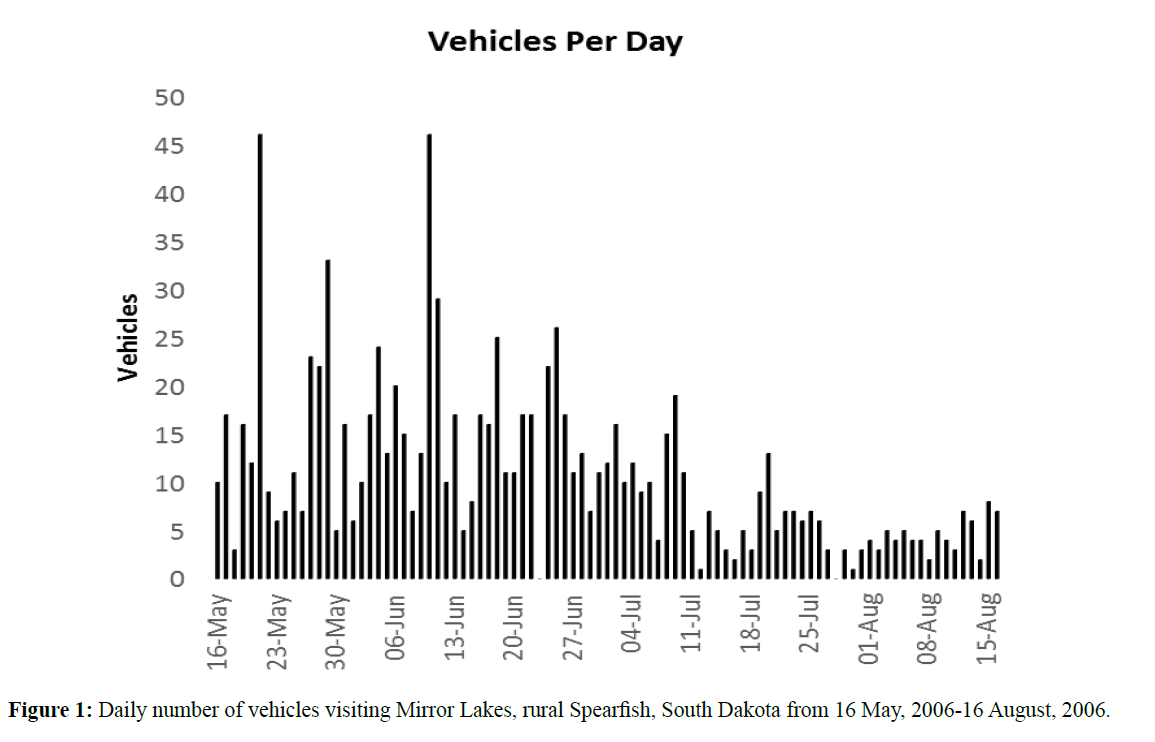
Figure 1: Daily number of vehicles visiting Mirror Lakes, rural Spearfish, South Dakota from 16 May, 2006-16 August, 2006.
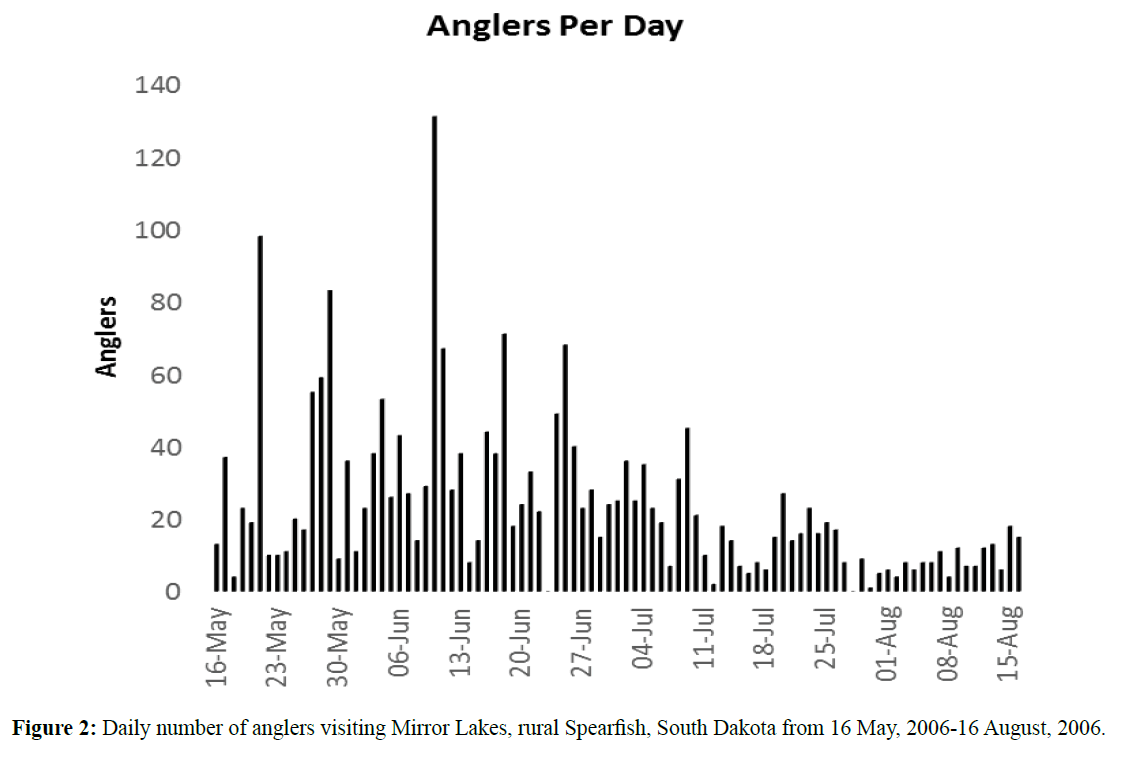
Figure 2: Daily number of anglers visiting Mirror Lakes, rural Spearfish, South Dakota from 16 May, 2006-16 August, 2006.
Concentration of harvest and catch
Out of a total 1,014 unique angling parties, 313 (31%) parties in specific vehicles caught fish, however only 192 (19%) parties harvested any fish during the study period. The number of trips made by unique parties was highly variable, ranging from a single trip to over ten trips in some cases. Over the course of the study a combined 1,077 rainbow trout were harvested from Upper and Lower Mirror Lakes. The number of fish harvested by a single unique party ranged from 1 up to 57 rainbow trout. Twenty five (2.4%) of the angling parties harvested over 45% of the stocked catchable trout (Table 1 and Figure 3). Similarly, 32.1% of the total catch was accounted for by the same 25 (2.4%) of the angling parties (Figure 4).
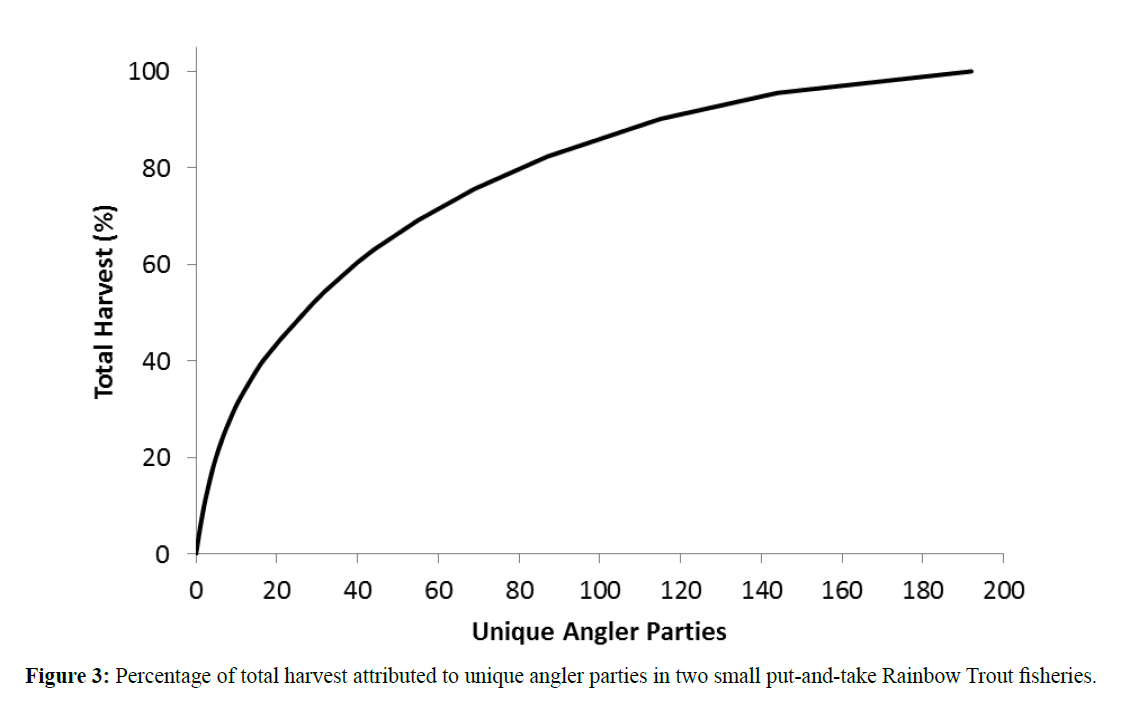
Figure 3: Percentage of total harvest attributed to unique angler parties in two small put-and-take Rainbow Trout fisheries.
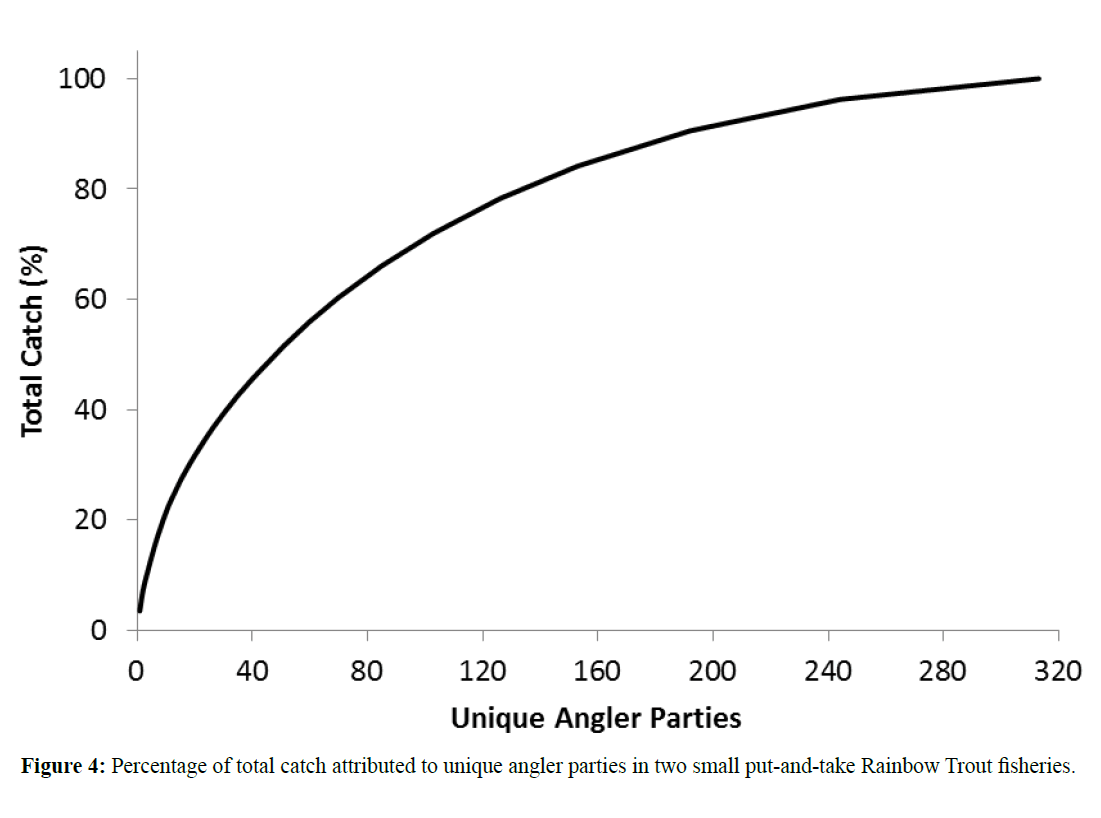
Figure 4: Percentage of total catch attributed to unique angler parties in two small put-and-take Rainbow Trout fisheries.
| Party |
Trout Harvested |
% Total Harvest |
Released Fish (Y/N) |
Min Anglers/Party |
Max Anglers/Party |
# Trips |
| 1 |
57 |
5.3 |
Y |
2 |
4 |
11 |
| 2 |
50 |
9.9 |
Y |
1 |
2 |
10 |
| 3 |
41 |
13.7 |
N |
3 |
4 |
3 |
| 4 |
37 |
17.2 |
N |
1 |
2 |
8 |
| 5 |
32 |
20.1 |
Y |
2 |
4 |
6 |
| 6 |
27 |
22.7 |
Y |
1 |
1 |
9 |
| 7 |
25 |
25 |
Y |
2 |
4 |
3 |
| 8 |
22 |
27 |
Y |
2 |
4 |
4 |
| 9 |
21 |
29 |
Y |
1 |
2 |
15 |
| 10 |
20 |
30.8 |
Y |
1 |
1 |
5 |
| 11 |
17 |
32.4 |
N |
2 |
2 |
3 |
| 12 |
16 |
33.9 |
N |
1 |
2 |
3 |
| 13 |
15 |
35.3 |
Y |
2 |
2 |
6 |
| 14 |
16 |
36.7 |
N |
1 |
2 |
4 |
| 15 |
15 |
38.1 |
N |
2 |
2 |
2 |
| 16 |
14 |
39.4 |
N |
3 |
3 |
1 |
| 17 |
12 |
40.5 |
Y |
2 |
4 |
4 |
| 18 |
11 |
41.5 |
N |
1 |
2 |
9 |
| 19 |
11 |
42.5 |
N |
2 |
2 |
2 |
| 20 |
11 |
43.5 |
Y |
1 |
3 |
2 |
| 21 |
11 |
44.6 |
N |
2 |
2 |
2 |
| 22 |
10 |
45.5 |
N |
2 |
2 |
6 |
| 23 |
10 |
46.4 |
N |
2 |
2 |
1 |
| 24 |
10 |
47.4 |
Y |
4 |
4 |
1 |
| 25 |
10 |
48.3 |
N |
2 |
2 |
1 |
Table 1: Characteristics of party size, number of trips, and angler harvest and release of Rainbow Trout for 25 unique parties that harvested ten or more fish from two small put-and-take fisheries.
Timing of harvest
A large percentage of the overall harvest of fish in both lakes took place within 3 weeks of stocking. In Upper Mirror Lake 88% of the total harvest of rainbow trout occurred within 3 weeks of stocking (Figure 5). Similarly, 86% of the total harvest of rainbow trout in Lower Mirror Lake also occurred within 3 weeks of stocking (Figure 6).
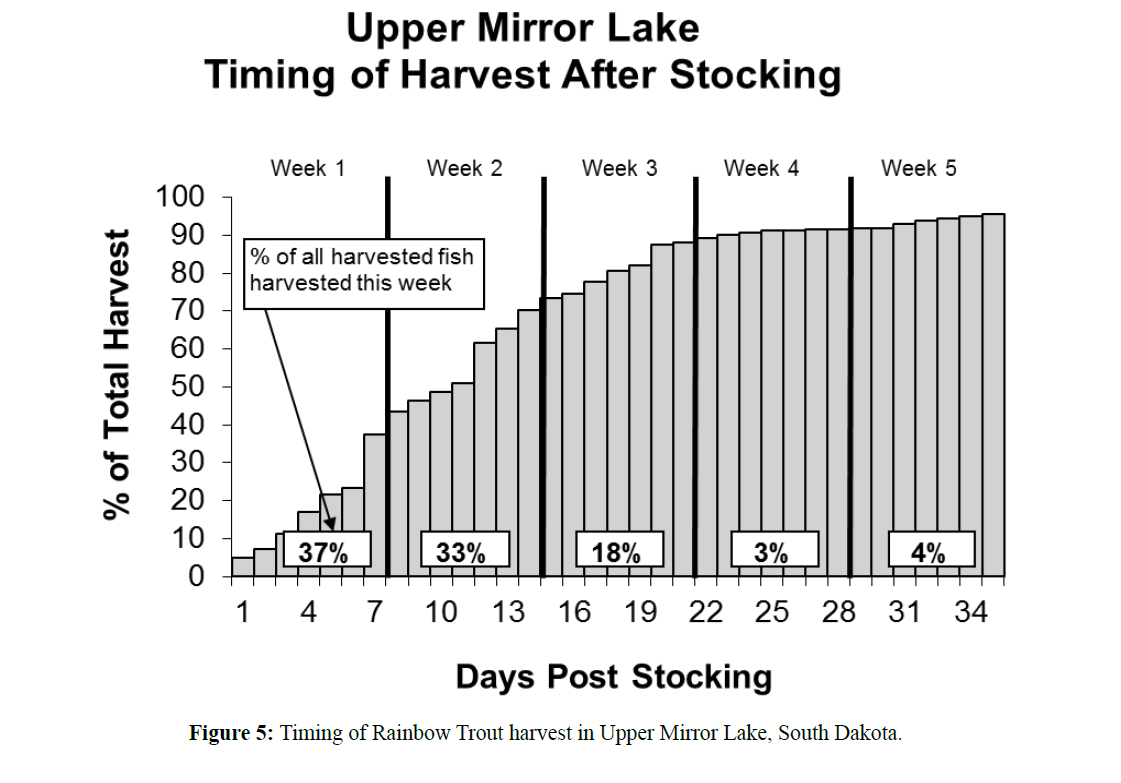
Figure 5: Timing of Rainbow Trout harvest in Upper Mirror Lake, South Dakota.
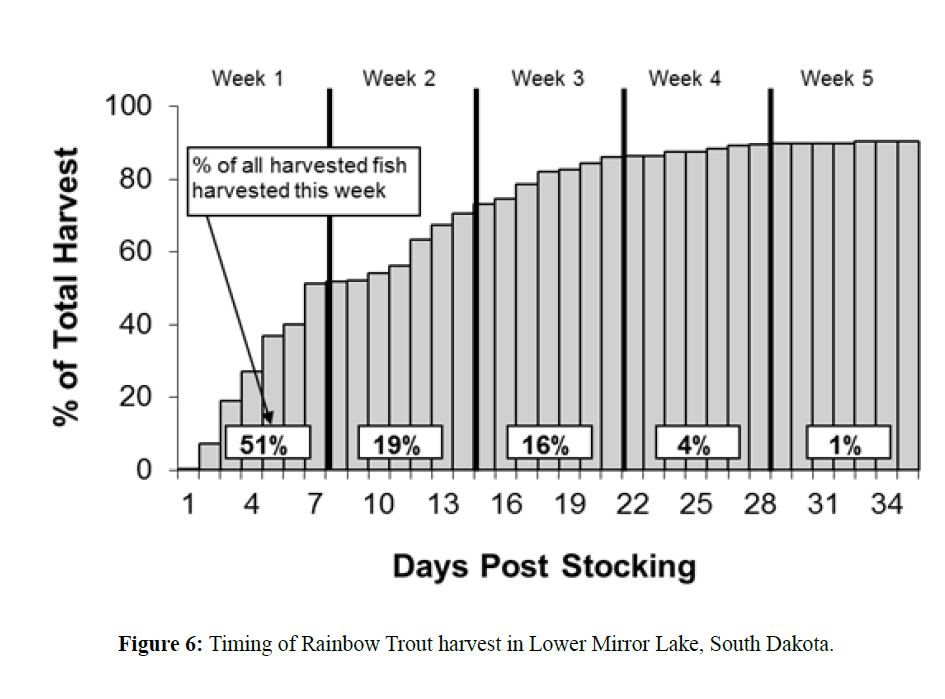
Figure 6: Timing of Rainbow Trout harvest in Lower Mirror Lake, South Dakota.
Discussion
The results of this study may describe for the first time the concentration of hatchery-reared rainbow trout harvest and catch by such a small percentage of anglers; we could find no other published scientific studies investigating this phenomenon. However, the popular media is replete with the maxim that "10 percent of the fisherman catch 90% of the fish" (Hardie, 1975; Merritt, 2000; Toth, 2000; Ellis, 2014; Franklin, 2015; Chapralis, 2016). The results from this study, where approximately 12% of the angling parties harvested 90% of the fish, appear to validate the conventional wisdom.
The relatively quick time to harvest in Mirror Lakes is consistent with rainbow trout being an easily exploitable species (Cox and Walter, 2002; Cox et al., 2002; Koenig and Meyer, 2011). The timing of harvest, with over 80% of the harvest occurring within the first three weeks, is slightly longer than the 10-day time frame identified in California by Butler and Borgeson (1965). Slightly more than 60% of the harvest occurred within the first 10 days of this study. The timing of harvest is also substantially longer than that observed by Fay and Pardue (1986), who observed that most of the catchable rainbow trout in Virginia streams were harvested within the first two days. Less the 10% of the harvest occurred that quickly in this study. While the differences in harvest timing among the studies could be due to the strain differences in the trout stocked (Moring, 1982; Dwyer and Piper, 1984), it is more likely due to the amount of angling pressure. The Shasta strain is very domesticated (Needham and Behnke, 1962), similar to some of the strains used in the other studies, but the angling pressure in South Dakota may have been less than that in the more densely populated states of Virginia and California.
Water temperatures likely influenced the results of this study. Lower Mirror Lake experiences elevated water temperatures later in the summer (Barnes et al., 2009), likely explaining the differences in harvest timing between the two lakes. Angling pressure also declined as the summer progressed, with much higher pressure in May and June compared to July and August. This is likely due to the greatly elevated ambient air temperatures later in the summer which can discourage anglers from being outside.
Other weather-related events, such as severe thunderstorms, winds, or prolonged rain, are probably responsible for those days when little or no angling pressure was observed.
This study demonstrates how a small number of harvestoriented anglers, representing a very small proportion of the total number of anglers, can account for a very large percentage of the overall catch and harvest of stocked rainbow trout. Although anglers vary from high to low consumptive orientations (Fedler and Ditton, 1986,1994), and the motives of certain segments of the angling population may be unrelated to catch (Arlinghaus, 2006), satisfaction for non-consumptive anglers is likely still dependent on the catch related aspects of fishing (Holland and Ditton, 1992; Arlinghaus, 2006). Thus, the impact of a concentrated harvest by a few anglers may be negatively impacting the satisfaction of a larger proportion of the angling public.
Management implications
With harvest concentrated to a relatively few angling parties, fisheries managers should consider regulations reducing the daily trout limit. This action would only affect a small number of anglers, while likely maintaining desirable catch rates and satisfaction for the majority of the anglers. In addition, a reduced limit may increase the amount of time before stocked trout are harvested by restricting the number of fish quickly removed by the relatively small number of anglers. By increasing the amount of time before harvest, the number of trout stocked could be reduced, or the frequencies of stocking lengthened, thereby decreasing management costs associated with hatchery production and fish transportation. Another option would be to increase the size of stocked fish beyond 36 cm. Under the current regulations this change would effectively limit daily harvest to one trout per angler. If reductions in daily limits are not undertaken, stocking intervals of three to four weeks should be maintained to maximize catch rates and angler satisfaction.
18198
References
- Arlinghaus, R. (2006) On the apparently striking disconnect between motivation and satisfaction in recreational fishing: the case of catch orientation of German anglers. North American J Fisheries Management 26, 592-605.
- Barnes, M.E., Simpson, G., Durben, D.J. (2009) Poststocking harvest of catchable-sized rainbow trout enhanced by dietary supplementation with a fully fermented commercial yeast culture during hatchery rearing. North American J Fisheries Management 29, 1287-1295.
- Butler, R.L., Borgeson, D.P. (1965) California “catchable” trout fisheries. California Department of Fish and Game Fish Bulletin 127, 1-47.
- Chapralis, J.C. (2016) AnglingMatters Because It Really Does. Accessed on 28 April 2016.
- Cox, S.P., Walters C.(2002) Modeling exploitation in recreational fisheries and implications for effort management on British Columbia rainbow trout lakes. North American J Fisheries Management 22, 21-34.
- Cox, S.P., Beard, T.D., Walters, C. (2002) Harvest control in open-access sport fisheries: hot rod or asleep at the wheel. Bull Mar Sci70, 749-761.
- Dwyer, W.P., Piper, R.G. (1984) Three-year hatchery and field evaluation of four strains of rainbow trout. North American J Fisheries Management 4, 261-221.
- Fay, C.W., Pardue, G.B. (1986) Harvest, survival, growth, and movement of five strains of hatchery-reared rainbow trout in Virginia streams. North American J Fisheries Management 6, 569-579.
- Fedler, A.J., Ditton, R.B. (1986) A framework for understanding the consumptive orientation of recreational fishermen. Environmental Management 10, 221-227.
- Fedler, A.J., Ditton, R.B. (1994) Understanding angler motivations in fisheries management. Fisheries 19, 6-13.
- Greiner, M.J. (2011) Urban fisheries in eastern South Dakota: assessment of angler satisfaction and fishery resources. MS thesis, South Dakota State University, Brookings, South Dakota, USA.
- Hardie, J.(1975) You, too, can be a world record fisherman. Popular Mechanics 143, 81-83.
- Holland, S.M., Ditton, R.B. (1992) Fishing trip satisfaction: a typology of anglers. North American J Fisheries Management 12, 28-33.
- Keller, M., Smith, K.D., Rybicki, R.W. (1990) Review of salmon and trout management in Lake Michigan. Fisheries Special Report No. 14. Michigan Department of Natural Resources, Charlevoix, Michigan, USA.
- Kerr, S.J., Lasenby, T.A. (2000) Rainbow trout stocking in inland lakes and streams: an annotated bibliography and literature review. Fish and Wildlife Branch, Ontario Ministry of Natural Resources, Peterborough, Ontario, Canada.
- Koenig, M.K., Meyer, K.A. (2011) Relative performance of diploid and triploid catchable rainbow trout stocked in Idaho lakes and reservoirs. North American J Fisheries Management31, 605-613.
- MacCrimmon, H.R. (1971) World distribution of rainbow trout (Salmo gairdneri). J Fisheries Res Board of Canada 28, 663-704.
- Merritt, J. (2000) Trout Dreams. Derrydale Press, Lanham, Maryland, USA.
- Moring, J.R. (1982) An efficient hatchery strain of rainbow trout for stocking Oregon streams. North American J Fisheries Management 2, 209-215.
- Needham, P.R., Behnke, R.J. (1962) The origin of hatchery rainbow trout. Progressive Fish Culturist 24, 156-158.
- Post, J.R., Parkinson, E.A. (2012) Temporal and spatial patterns of angler effort across lake districts and policy options to sustain recreational fisheries. Can J Fish and Aquat Res69, 321-329.
- Toth, M. (2000) The Complete Idiot’s Guide to Fishing Basics, 2nd ed. Alpha Books, Indianapolis, Indiana, USA.












